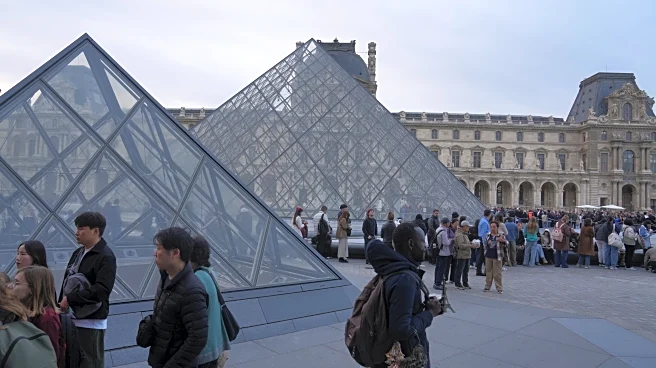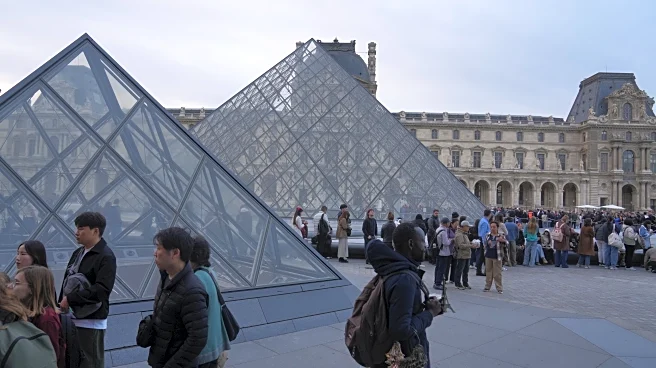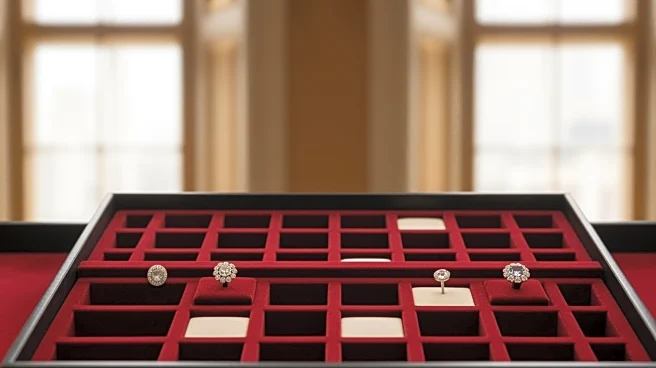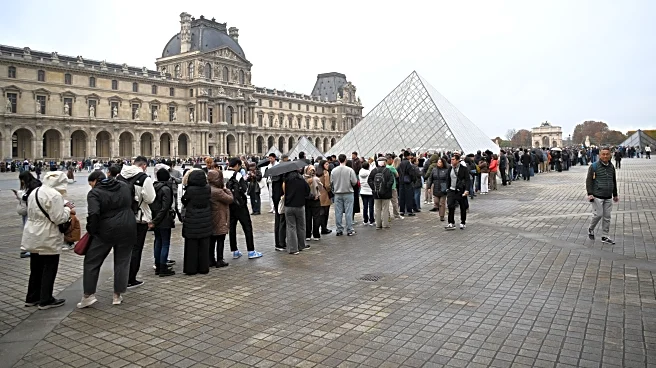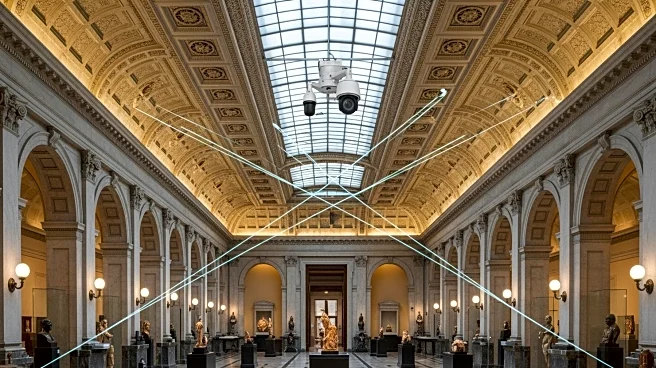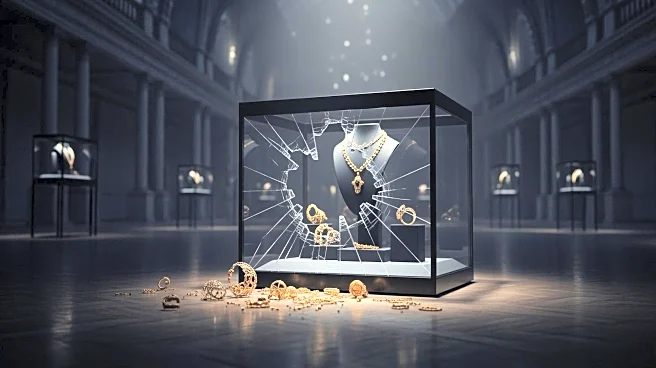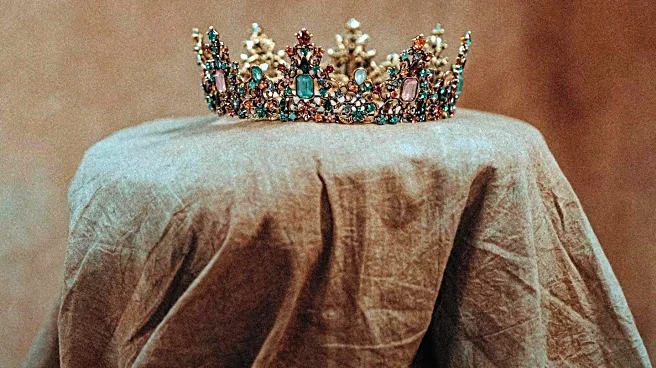What's Happening?
In a daring heist at the Louvre Museum in Paris, thieves stole eight precious jewels valued at approximately €88 million. The robbery occurred on October 19, 2025, when masked individuals used a truck-mounted
ladder to access a second-floor window of the museum. The stolen items include a sapphire diadem, necklace, and earrings from French queens Marie-Amélie and Hortense, an emerald necklace and earrings from Empress Marie-Louise, a reliquary brooch, and Empress Eugénie’s diadem and brooch. The robbers used grinders to cut through the window and escaped on scooters, completing the heist in less than eight minutes. The theft has left French authorities and the public in shock, as the stolen jewels are considered culturally significant and historically priceless.
Why It's Important?
The heist at the Louvre Museum represents a significant cultural loss for France, as the stolen jewels are not only valuable but also hold immense historical significance. The theft has raised concerns about the security measures in place at one of the world's most visited museums. The incident has sparked a national debate on the adequacy of funding for museum security and the protection of cultural heritage. The loss of these jewels could have a lasting impact on France's cultural identity, as they are emblematic of the country's royal history. The heist also highlights the challenges faced by law enforcement in preventing and investigating high-profile art thefts.
What's Next?
French authorities have launched a major investigation to capture the suspects and recover the stolen jewels. Over 100 investigators are involved in the manhunt, utilizing DNA methods, fingerprinting, and surveillance footage to track down the thieves. The investigation is considered a race against time, as there is a risk that the jewels could be broken down and sold in smaller pieces, making recovery more difficult. The incident may lead to increased security measures at museums across France and potentially influence international protocols for protecting cultural artifacts.
Beyond the Headlines
The Louvre heist underscores the ethical and cultural implications of art theft, as the stolen jewels are not only valuable commodities but also irreplaceable pieces of history. The theft raises questions about the global black market for stolen art and the challenges in tracing and recovering such items. It also highlights the vulnerability of cultural institutions to organized crime and the need for international cooperation in safeguarding cultural heritage. The incident may prompt a reevaluation of security strategies and funding priorities for museums worldwide.


